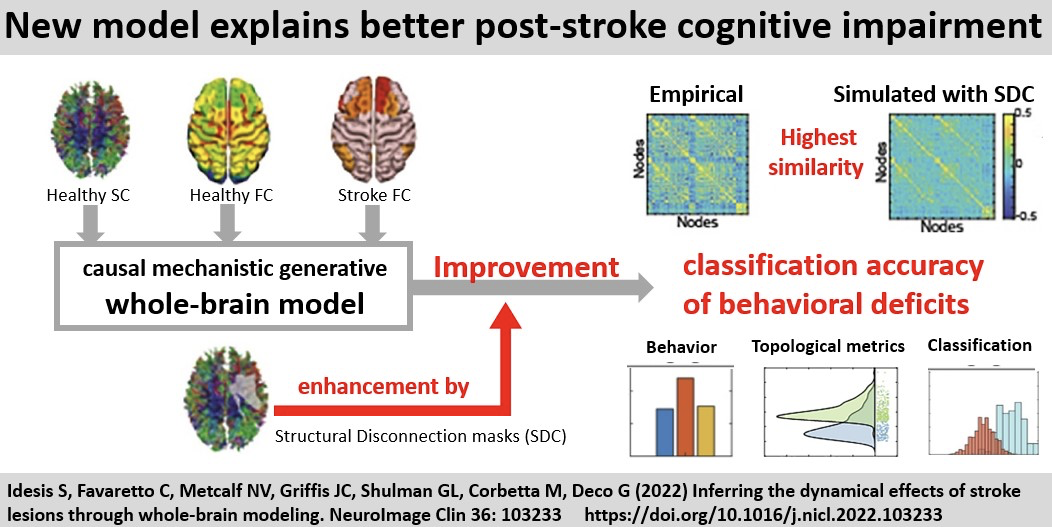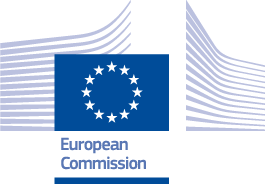Enhancement of structural and effective connectivity information by functional data and whole-brain models
Gustavo Deco (PI), Sebastian Idesis
Connectomics as one of the hot topics in neuroscience is based on the extraction of the underlying SC matrix. However, if SC is acquired by DTI/DSI tractography many links, in particular inter-hemispheric links, are missing. In databases like Cocomac, the distribution of the density of fibers weighting the coupling between different pairs of brain areas is also missing. With such a coarse description of the structural connectome, the fitting of the corresponding resting state FC matrix is very bad. We aim to enhance the quality of the experimentally obtained SC by using the FC to improve the underlying connectome using machine learning procedures and a whole-brain model linking structure and FC. This will be done using FC connectivity matrices from the human and the ferret brain (datasets from UKE-Engel, UKE-Zittel, BI and UNIPD). With this procedure we can not only enhance the underlying SC but also infer the local “effectivity” (i.e., synaptic conductivities of single fibers) of each single tract. In this way, we plan to derive a whole-brain “effective connectivity matrix” that we hypothesize will be more informative and in the case of human patients a much better biomarker in comparison with the traditional FC and SC. We aim to study how the SC of humans obtained with DTI/DSI tractography is improved, such that the corresponding resting FC obtained on the same group of humans is self-consistently maximally accounted. For the ferret brain, we will test this using SC obtained with anatomical tracing and DTI-based tractography. The improvements of the whole brain model based on this procedure, will be applied to the study of new causative model-base biomarkers for the diagnosis and even treatment design of neuropsychiatric diseases. Further more, we will consider also healthy populations and use this methodology for investigating normal aging, and brain differences in gender both under resting state and cognitive task conditions (using also standard data bases like HCP), and even more the differences in aging under the consideration of gender.
The results of our research have been published in several articles. In the first article, we explored the application of a novel approach called "edge-centric analysis" to the dataset of stroke patients. This approach utilizes newly developed measures to uncover information at the edge level, offering promising connections between brain structure and function. Our study presented a novel direction for mapping the brain in clinical settings. The analysis provided indicators closely related to lesion severity and recovery, making it the first to adopt an edge-centric approach with clinical applications over time.

In the second article, we constructed a causal mechanistic generative model of the entire brain to understand the functional and behavioral consequences of stroke lesions. Notably, we incorporated structural disconnection masks, which significantly improved the model's performance, enabling us to classify severity and differentiate asymmetries in network communication. By utilizing the whole-brain model, we demonstrated how network dynamics change after a stroke injury.

The third article focuses on dimensionality reduction of recordings using an autoencoder to uncover non-linear components of brain dynamics in stroke patients. At the acute stage, the latent representation yielded significant diagnostic power. Moreover, we used this embedded information to predict recovery after one year following the incident and found that incorporating the latent space information improved recovery prediction. Complexity metrics, such as brain signal reversibility, also offered indicators related to lesion severity and recovery. This article is currently under review in the "Scientific Reports" Journal.

Collectively, these studies provide clear evidence of typical dynamics emerging as a consequence of stroke incidents. They challenge the previous belief of stroke's local effects by highlighting its global impact on the brain. By integrating anatomical and functional information, our work sheds light on this topic and addresses crucial aspects of stroke-related brain dynamics, ultimately aiming to improve patient outcomes and contribute to the field of stroke research.
Last update: July 31, 2023.
Book traversal links for 11 Enhancement of structural and effective connectivity information by functional data and whole-brain models
- ‹ 10 Mapping structural, functional, metabolic, and electrophysiological connectivity in healthy and stroke patients with a hybrid PET/MR system and hdEEG, and whole brain modelling of these relationships
- Up
- 12 Impact of DC electric fields on interlaminar and intercolumnar cortical network dynamics ›

 European School of Network Neuroscience
European School of Network Neuroscience